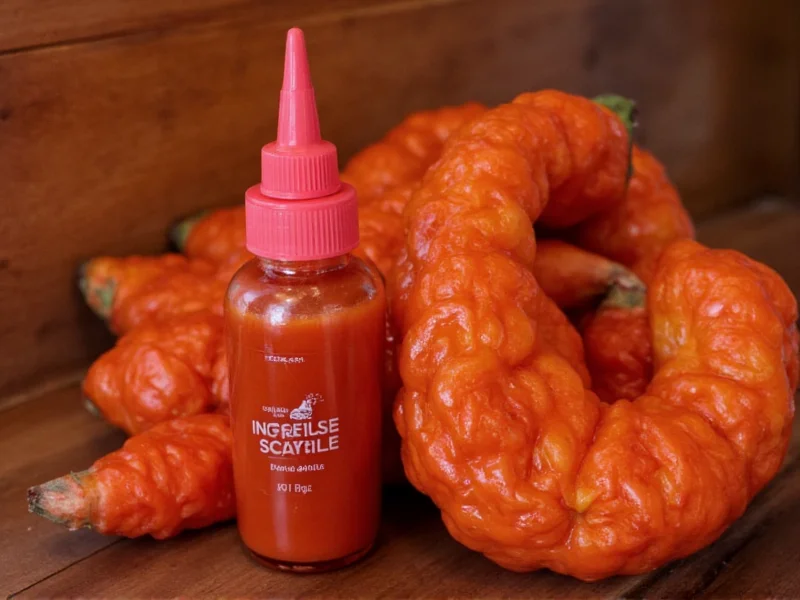Understanding where Cholula falls on the Scoville scale provides valuable context for both culinary applications and personal heat tolerance. The Scoville scale, developed by pharmacist Wilbur Scoville in 1912, measures the concentration of capsaicin—the compound responsible for chili pepper heat—in Scoville Heat Units. Originally determined through human taste testing, modern measurements use high-performance liquid chromatography for precise capsaicin quantification.
Cholula's Position on the Heat Spectrum
At 1,000-2,000 SHU, Cholula occupies a strategic middle ground in the hot sauce marketplace. This heat level makes it versatile for everyday use without overwhelming other flavors in your dishes. The sauce's distinctive flavor profile comes from its blend of three pepper varieties:
- Puya peppers (5,000-8,000 SHU) - Provide foundational heat
- Arbol peppers (15,000-30,000 SHU) - Contribute sharp, immediate heat
- Red peppers (variable heat) - Add fruitiness and balance
What makes Cholula's heat perception milder than its individual pepper components might suggest is its formulation. The sauce contains significant amounts of vinegar, water, and xanthan gum, which dilute the capsaicin concentration while maintaining flavor complexity. This careful balance explains why Cholula feels less intense than sauces with similar Scoville ratings but different ingredient profiles.
Comparative Heat Analysis
Understanding Cholula's heat level becomes clearer when compared to other popular condiments. The following table shows where Cholula fits among common hot sauces and peppers:
| Product | Scoville Heat Units | Heat Level Description |
|---|---|---|
| Cholula Hot Sauce | 1,000-2,000 SHU | Mild to medium, approachable heat |
| Tabasco Sauce | 2,500-5,000 SHU | Moderate heat with vinegar sharpness |
| Sriracha | 1,000-2,200 SHU | Sweet heat with garlic notes |
| Jalapeño Pepper | 2,500-8,000 SHU | Fresh pepper with variable heat |
| Habanero Pepper | 100,000-350,000 SHU | Intense, fruity heat |
| Ghost Pepper | 855,000-1,041,427 SHU | Extreme heat, not for beginners |
When comparing cholula hot sauce scoville units to Tabasco, you'll notice Tabasco typically measures higher at 2,500-5,000 SHU. This difference explains why many find Tabasco noticeably sharper despite both being considered medium-heat sauces. The question of is cholula hotter than sriracha has a nuanced answer—while their Scoville ranges overlap significantly, Cholula often feels slightly hotter due to its different pepper blend and less sweet profile.
Factors Influencing Heat Perception
The actual heat experience with Cholula varies based on several factors beyond its official Scoville rating:
- Individual tolerance - Regular chili consumers perceive less heat than those unaccustomed to capsaicin
- Food pairing - Dairy products neutralize capsaicin, while acidic foods can intensify heat perception
- Application method - A few drops versus generous pouring creates dramatically different experiences
- Batch variation - Natural variations in pepper crops cause minor fluctuations in heat level
Unlike many hot sauces that rely primarily on one pepper variety, Cholula's blend creates a more complex heat profile that builds gradually rather than hitting with immediate intensity. This characteristic makes it particularly suitable for those exploring spicy foods, as the heat develops slowly enough to appreciate the sauce's garlic, cumin, and vinegar notes.
Practical Applications of Cholula's Heat Level
The 1,000-2,000 SHU range makes Cholula exceptionally versatile in the kitchen. Its moderate heat level allows it to enhance rather than dominate dishes. Professional chefs appreciate how cholula hot sauce scoville measurement provides enough kick to add dimension without requiring careful dosage calculations needed with hotter sauces.
For home cooks wondering how hot is cholula hot sauce in practical terms, consider these usage scenarios:
- Breakfast applications - Perfect for huevos rancheros or avocado toast where intense heat would overwhelm
- Marinades - Adds subtle heat without compromising meat tenderness
- Cocktails - Ideal for micheladas and bloody marys where balance is crucial
- Finishing sauce - Can be added tableside without fear of making dishes inedible
Understanding the cholula vs tabasco scoville difference helps explain why Cholula has gained popularity as an everyday hot sauce. While Tabasco's sharper vinegar punch works well in specific applications like oysters or cocktails, Cholula's more rounded heat profile makes it suitable for broader culinary use.
Myths About Cholula's Heat Level
Several misconceptions persist about Cholula's heat measurement:
- Myth: Cholula's heat has increased over time
Reality: The company maintains consistent heat levels through careful pepper selection - Myth: The glass bottle affects heat perception
Reality: Heat level remains consistent across packaging formats - Myth: Different flavors have significantly different heat levels
Reality: While flavor profiles vary, the original heat level remains consistent across most varieties
When evaluating hot sauce heat claims, remember that Scoville measurements represent capsaicin concentration, not necessarily the subjective heat experience. Factors like sugar content, acidity, and flavor compounds significantly influence how our palates perceive heat—a phenomenon known as the heat illusion effect.











 浙公网安备
33010002000092号
浙公网安备
33010002000092号 浙B2-20120091-4
浙B2-20120091-4